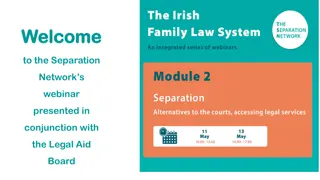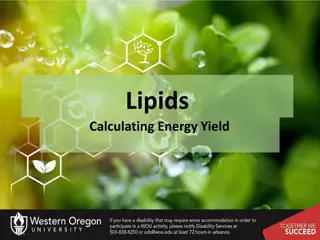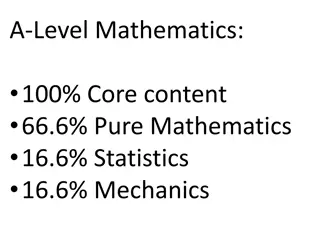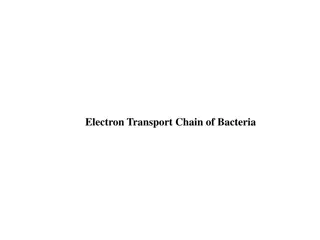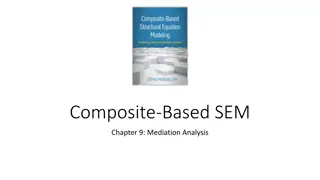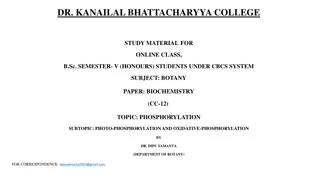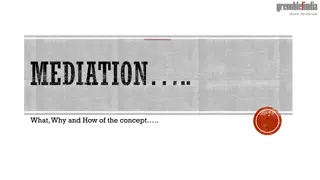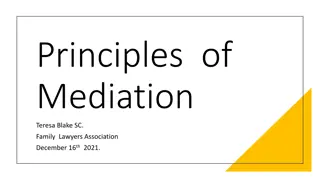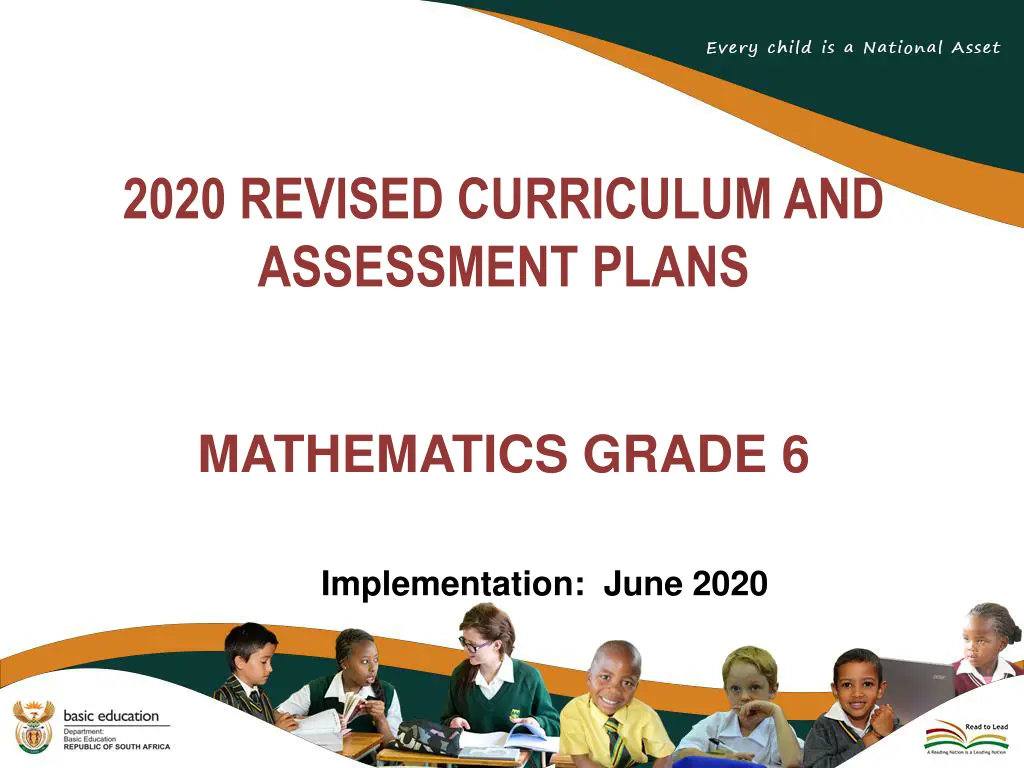
Revised Mathematics Curriculum and Assessment Plans for Grade 6
Explore the amendments and purpose of the revised 2020 Mathematics curriculum and assessment plans for Grade 6, focusing on essential core content and skills, assessment strategies, and teacher guidance. Amendments include adjustments to the Content Overview, Annual Teaching Plan, and School-Based Assessment to ensure effective teaching and learning outcomes.
Download Presentation

Please find below an Image/Link to download the presentation.
The content on the website is provided AS IS for your information and personal use only. It may not be sold, licensed, or shared on other websites without obtaining consent from the author. If you encounter any issues during the download, it is possible that the publisher has removed the file from their server.
You are allowed to download the files provided on this website for personal or commercial use, subject to the condition that they are used lawfully. All files are the property of their respective owners.
The content on the website is provided AS IS for your information and personal use only. It may not be sold, licensed, or shared on other websites without obtaining consent from the author.
E N D
Presentation Transcript
2020 REVISED CURRICULUM AND ASSESSMENT PLANS MATHEMATICS GRADE 6 Implementation: June 2020
Presentation Outline 1.Purpose 2.Amendments to the Content Overview for the Phase; 3.Amendments to the Annual Teaching Plan; 4.Amendments School Based Assessment (SBA) 5.Conclusion
1. Purpose To mediate the amendments of the trimmed and re-organised 2020 Annual Teaching Plan including School Based Mathematics, Grade 6 for implementation in June 2020 as stipulated in Circular S--. To ensure that meaningful proceeds during the remaining teaching time as per the revised school calendar. To assist teachers with guided pacing and sequencing of curriculum assessment. Assessment for teaching content and
1. Purpose (continued) To enable teachers to cover the essential core content /skills in each grade within the available time. To assist teachers with planning for the different forms of assessment. To ensure learners are adequately prepared for the subsequent year/s in terms of content, skills, knowledge, attitudes and values
2. Amendments to the Content Overview for the Phase
Summary: Amendments to the Content Overview for the Phase WHOLE NUMBERS: COUNTING, ORDERING AND REPRESENTING Grade 4 Grade 5 Grade 6 Count forwards and backwards (in 2s, 3s, 5s, 10s, 25s, 50s, 100s) between 0 and at least 10 000 Order, compare and represent numbers to at least 4-digit numbers Represent odd and even numbers to at least 1 000. Count forwards and backwards in whole number intervals up to at least 10 000 Order, compare and represent numbers to at least 6-digit numbers Represent odd and even numbers to at least 1 000. Order, compare and represent numbers to at least 9-digit numbers Represent prime numbers to at least 100
Summary: Amendments to the Content Overview for the Phase WHOLE NUMBERS: COUNTING, ORDERING AND REPRESENTING, cont . Grade 4 Grade 5 Grade 6 Recognize the place value of digits in whole numbers to at least 4- digit numbers Round off to the nearest 10, 100 and 1 000. Recognize the place value of digits in whole numbers to at least 6 digit numbers Round off to the nearest 5, 10, 100 and 1 000 Recognizing the place value of digits in whole numbers to at least 9- digit numbers Round off to the nearest 5, 10, 100, 1 000, 100 000, and 1 000 000
Summary: Amendments to the Content Overview for the Phase WHOLE NUMBERS: ADDITION AND SUBTRACTION Grade 4 Grade 5 Grade 6 Addition and subtraction of whole numbers of at least 4 digits Addition and subtraction of whole numbers of at least 5 digits Addition and subtraction of whole numbers of at least 6 digits
Summary: Amendments to the Content Overview for the Phase WHOLE NUMBERS: ADDITION AND SUBTRACTION- CALCULATION TECHNIQUES Grade 4 Grade 5 Grade 6 estimation building up and breaking down numbers rounding off and compensating using a number line using addition and subtraction as inverse operations. estimation adding and subtracting in columns building up and breaking down numbers using a number line rounding off and compensating using addition and subtraction as inverse operations estimation adding and subtracting in columns building up and breaking down numbers rounding off and compensating using addition and subtraction as inverse operations using a calculator
Summary: Amendments to the Content Overview for the Phase WHOLE NUMBERS: ADDITION AND SUBTRACTION- PROPERTIES Grade 4 Grade 5 Grade 6 Recognize and use the commutative and associative properties of whole numbers 0 in terms of additive property Recognize and use the commutative and associative properties of whole numbers 0 in terms of additive property Recognize and use the commutative and associative properties of whole numbers 0 in terms of additive property
Summary: Amendments to the Content Overview for the Phase WHOLE NUMBERS: ADDITION AND SUBTRACTION- SOLVING PROBLEMS IN CONTEXT Grade 4 Grade 5 Grade 6 Solve problems in contexts involving whole numbers, including: financial contexts measurement context Solve problems in contexts involving whole numbers, including: financial contexts measurement context Solve problems in contexts involving whole numbers, including: financial contexts measurement context
Summary: Amendments to the Content Overview for the Phase WHOLE NUMBERS: MULTIPLICATION Grade 4 Grade 5 Grade 6 Multiplication of at least whole 2-digit by 2-digit numbers Multiplication of at least whole 3-digit by 2-digit numbers Multiplication of at least whole 4-digit by 3-digit numbers
Summary: Amendments to the Content Overview for the Phase WHOLE NUMBERS: MULTIPLICATION: CALCULATION TECHNIQUES Grade 4 Grade 5 Grade 6 estimation building up and breaking down numbers doubling and halving using multiplication and division as inverse operations. estimation building up and breaking down numbers doubling and halving using multiplication and division as inverse operations estimation building up and breaking down numbers multiplying in columns using multiplication and division as inverse operations using a calculator
Summary: Amendments to the Content Overview for the Phase WHOLE NUMBERS: MULTIPLES AND FACTORS Grade 4 Grade 5 Grade 6 Multiples of 1-digit numbers to at least 100 Multiples of 2-digits whole numbers to at least 100 Factors of 2-digit whole numbers to at least 100 Multiples of 2-digit and 3- digit numbers Factors of 2-digit and 3- digit whole numbers Prime factors of numbers to at least 100
Summary: Amendments to the Content Overview for the Phase WHOLE NUMBERS: MULTIPLICATION-PROPERTIES Grade 4 Grade 5 Grade 6 Recognize and use the commutative; associative; and distributive properties of whole numbers. Recognize and use the commutative; associative and distributive properties with whole numbers. 1 in terms of its multiplicative property Recognize and use the commutative; associative and distributive properties with whole numbers. 1 in terms of its multiplicative property
Summary: Amendments to the Content Overview for the Phase WHOLE NUMBERS: MULTIPLICATION- SOLVING PROBLEMS IN CONTEXT Grade 4 Grade 5 Grade 6 Solve problems in contexts involving whole numbers, including: financial contexts measurement context comparing two or more quantities of the same kind (ratio) comparing two quantities of different kinds (rate). Solve problems in contexts involving whole numbers, including: financial contexts measurement context comparing two or more quantities of the same kind (ratio) comparing two quantities of different kinds (rate). Solve problems in contexts involving whole numbers, including: financial contexts measurement context comparing two or more quantities of the same kind (ratio) comparing two quantities of different kinds (rate).
Summary: Amendments to the Content Overview for the Phase WHOLE NUMBERS: DIVISION Grade 4 Grade 5 Grade 6 Division of at least whole 3- digit by 1-digit numbers Division of at least whole 3- digit by 2-digit numbers Division of at least whole 4- digit by 3-digit numbers
Summary: Amendments to the Content Overview for the Phase WHOLE NUMBERS: DIVISION: CALCULATION TECHNIQUES Grade 4 Grade 5 Grade 6 estimation building up and breaking down numbers using multiplication and division as inverse operations. estimation building up and breaking down numbers using multiplication and division as inverse operations estimation building up and breaking down numbers long division using multiplication and division as inverse operations using a calculator
Summary: Amendments to the Content Overview for the Phase WHOLE NUMBERS: DIVISION-PROPERTIES Grade 4 Grade 5 Grade 6 Recognize and use the distributive property of whole numbers. Recognize and use the distributive property of whole numbers 1 in terms of its multiplicative property Recognize and use the distributive property of whole numbers 1 in terms of its multiplicative property
Summary: Amendments to the Content Overview for the Phase WHOLE NUMBERS: DIVISION- SOLVING PROBLEMS IN CONTEXT Grade 4 Grade 5 Grade 6 Solve problems in contexts involving whole numbers, including: financial contexts measurement context comparing two or more quantities of the same kind (ratio) comparing two quantities of different kinds (rate). grouping and equal sharing with remainders Solve problems in contexts involving whole numbers, including: financial contexts measurement context comparing two or more quantities of the same kind (ratio) comparing two quantities of different kinds (rate) grouping and equal sharing with remainders Solve problems in contexts involving whole numbers, including: financial contexts measurement context comparing two or more quantities of the same kind (ratio) comparing two quantities of different kinds (rate) grouping and equal sharing with remainders
Summary: Amendments to the Content Overview for the Phase COMMON FRACTIONS: DESCRIBE, ORDER AND COMPARE Grade 4 Grade 5 Grade 6 Compare and order common fractions of different denominators (halves, thirds, quarters, fifths, sixths, sevenths, eighths) Describe and compare common fractions in diagram form. Count forwards and backwards in fractions Compare and order common fractions to at least twelfths Compare and order common fractions, including tenths and hundredths DONE IN TERM 1
Summary: Amendments to the Content Overview for the Phase COMMON FRACTIONS: CALCULATIONS WITH FRACTIONS Grade 4 Grade 5 Grade 6 Addition of common fractions with same denominators. Fractions of whole numbers Recognize, describe and use the equivalence of division and fractions Addition and subtraction of common fractions with same denominator Addition and subtraction of mixed numbers fractions of whole numbers Fractions of whole which result in whole numbers Recognise, describe and use the equivalence of division and fractions Addition and subtraction of common fractions in which one denominator is a multiple of another Addition and subtraction of mixed numbers Fractions of whole numbers DONE IN TERM 1
Summary: Amendments to the Content Overview for the Phase COMMON FRACTIONS: SOLVING PROBLEMS IN CONTEXT Grade 4 Grade 5 Grade 6 Solve problems in contexts involving common fractions, including grouping and equal sharing. Solve problems in contexts involving common fractions, including grouping and sharing Solve problems in contexts involving common fractions, including grouping and sharing DONE IN TERM 1
Summary: Amendments to the Content Overview for the Phase COMMON FRACTIONS: EQUIVALENT FORMS AND PERCENTAGE Grade 4 Grade 5 Grade 6 Recognize and use equivalent forms of common fractions (fractions in which one denominator is a multiple of another Recognize and use equivalent forms of common fractions (fractions in which one denominator is a multiple of another Find percentages of whole numbers Recognize equivalence between common fraction, decimal fraction and percentage forms of the same number
Summary: Amendments to the Content Overview for the Phase COMMON FRACTIONS: DECIMAL FRACTIONS- GRADE 6 ONLY Recognise, order and place value of decimal fractions Count forwards and backwards in decimal fractions to at least two decimal places Compare and order decimal fractions to at least two decimal places Place value of digits to at least two decimal places Calculations and Solving problems with decimal fractions Addition and subtraction of decimal fractions with at least two decimal places Multiply decimal fractions by 10 and 100 Solve problems in context involving decimal fractions Equivalent forms Recognize equivalence between common fraction and decimal fraction forms of the same number Recognize equivalence between common fraction, decimal fraction and percentage forms of the same number
Summary: Amendments to the Content Overview for the Phase NUMBER SENTENSE Grade 4 Grade 5 Grade 6 Write number sentences to describe problem situations Solve and complete number sentences by: inspection trial and improvement Check solution by substitution DONE IN TERM 1 Write number sentences to describe problem situations Solve and complete number sentences by: inspection trial and improvement Check solution by substitution DONE IN TERM 1 Write number sentences to describe problem situations Solve and complete number sentences by: inspection trial and improvement Check solution by substitution
Summary: Amendments to the Content Overview for the Phase NUMERIC AND GEOMETRIC PATTERNS: INVESTIGATE AND EXTEND PATTERNS Grade 4 Grade 5 Grade 6 Investigate and extend numeric patterns looking for relationships or rules of patterns: sequences involving a constant difference or ratio of learner s own creation Describe observed relationships or rules in learner s own words DONE IN TERM 1 Investigate and extend numeric and geometric patterns looking for relationships or rules of patterns: represented in physical or diagram form sequences not limited to constant difference or ratio of learner s own creation Describe observed relationships or rules for sequences involving constant ratio in learner s Investigate and extend numeric and geometric patterns looking for relationships or rules of patterns: represented in physical or diagram form sequences not limited to constant difference or ratio of learner s own creation Describe the general rules for the observed relationships
Summary: Amendments to the Content Overview for the Phase NUMERIC AND GEOMETRIC PATTERNS: INPUT AND OUTPUT VALUES AND EQUIVALENT FORMS Grade 4 Grade 5 Grade 6 Determine input values, output values and rules for patterns and relationships using flow diagrams tables Determine equivalence of different descriptions of the same relationship or rule presented: Verbally in a flow diagram by a number sentence DONE IN TERM 1 Determine input values, output values and rules for patterns and relationships using flow diagrams tables Determine equivalence of different descriptions of the same relationship or rule presented: Verbally in a flow diagram by a number sentence Determine input values, output values and rules for patterns and relationships using flow diagrams tables Determine equivalence of different descriptions of the same relationship or rule presented: Verbally in a flow diagram in a table by a number sentence
Summary: Amendments to the Content Overview for the Phase PROPERTIES OF 2D SHAPES Grade 4 Grade 5 Grade 6 Range of shapes Characteristics of shapes Further activities Range of shapes Characteristics of shapes Further activities Angles DONE IN TERM 1 Draw 2-D shapes on grid paper Draw circles, patterns in circles and patterns with circles using a pair of pair of compasses DONE IN TERM 1
Summary: Amendments to the Content Overview for the Phase PROPERTIES OF 3D OBJECTS: Range of objects Grade 4 Grade 5 Grade 6 Recognise, visualise and name 3-D objects in the environment and geometric settings, focusing on: rectangular prisms spheres cylinders cones square-based pyramids Extend recognising, visualising and naming 3-D objects in the environment and geometric settings, focusing on similarities and differences between cubes and rectangular prisms Extend recognising, visualising and naming 3-D objects in the environment and geometric settings, focusing on similarities and differences between tetrahedrons and other pyramids
Summary: Amendments to the Content Overview for the Phase PROPERTIES OF 3D OBJECTS: Characteristics and Further activities Grade 4 Grade 5 Grade 6 Describe, sort and compare 3-D objects in terms of: shapes of faces flat and curved surfaces Make 3-D models using cut out polygons Extend describing, sorting and comparing 3-D objects in terms of shape of faces to include: number of faces flat and curved surfaces Extend making 3-D models using cut out polygons to include cutting open boxes to trace and describe their nets Extend describing, sorting and comparing 3-D objects in terms of number and shape of faces including: number of vertices number of edges Make 3-D models using: drinking straws, toothpicks etc. nets
Summary: Amendments to the Content Overview for the Phase TRANSFORMATIONS: Composite shapes, Tessellations, Enlargement and Reduction Grade 4 EXCLUDED Grade 5 Grade 6 Make composite 2-D shapes including shapes with line symmetry by tracing and moving a 2-D shape in one or more of the following ways: by rotation by translation by reflection Make tessellated patterns including some patterns with line symmetry by tracing and moving 2-D in one or more of the following ways: by rotation by translation by reflection Draw enlargement and reductions of 2-D shapes to compare size and shape of Triangles quadrilaterals
Summary: Amendments to the Content Overview for the Phase VIEWING OBJECTS Grade 4 Grade 5 Grade 6 EXCLUDED Link the position of viewer to views of single everyday objects, collections of everyday objects or scenes from everyday life EXCLUDED
Summary: Amendments to the Content Overview for the Phase MASS: PRACTICAL MEASURING Grade 4 Grade 5 Grade 6 Estimate and practically measure 3-D objects using measuring instruments such as: bathroom scales kitchen scales balances Record, compare and order mass of objects in grams (g) and kilograms (kg). Estimate and practically measure 3-D objects using measuring instruments such as: bathroom scales kitchen scales balances Record, compare and order mass of objects in grams (g) and kilograms (kg). Estimate and practically measure 3-D objects using measuring instruments such as: bathroom scales (analogue and digital) kitchen scales (analogue and digital) balances Record, compare and order mass of objects in grams (g) and kilograms (kg).
Summary: Amendments to the Content Overview for the Phase MASS: CALCULATIONS AND PROBLEM-SOLVING Grade 4 Grade 5 Grade 6 Solve problems in contexts involving mass Convert between grams and kilograms limited to examples with whole numbers and fractions. Solve problems in contexts involving mass Convert between grams and kilograms limited to examples with whole numbers and fractions. Solve problems in contexts involving mass Extend converting between grams and kilograms to include fraction and decimal forms (to 2 decimal places)
Summary: Amendments to the Content Overview for the Phase LENGTH: PRACTICAL MEASURING Grade 4 Grade 5 Grade 6 Estimate and practically measure 2-D shapes and 3-D objects using measuring instruments such as: rulers metre sticks tape measures trundle wheel Record , compare and order lengths of shapes and objects in millimetres (mm), centimetres (cm), metres (m), kilometres (km) Estimate and practically measure 2-D shapes and 3- D objects using measuring instruments such as: rulers metre sticks tape measures trundle wheel Record , compare and order lengths of shapes and objects in millimetres (mm), centimetres (cm), metres (m), kilometres (km) Estimate and practically measure 2-D shapes and 3-D objects using measuring instruments such as: rulers metre sticks tape measures trundle wheel Record , compare and order lengths of shapes and objects in millimetres (mm), centimetres (cm), metres (m), kilometres (km)
Summary: Amendments to the Content Overview for the Phase LENGTH: CALCULATIONS AND PROBLEM-SOLVING Grade 4 Grade 5 Grade 6 Solve problems in contexts involving length Convert between between: millimetres (mm) and centimetres (cm), centimetres (cm) and metres (m) metres (m) and kilometres (km) Conversions limited to whole numbers and common fractions Solve problems in contexts involving length Convert between between any of the following: millimetres (mm) centimetres (cm), metres (m) kilometres (km) Conversions limited to whole numbers and common fractions Solve problems in contexts involving length Extend converting between millimetres (mm), centimetres (cm), metres (m) and kilometres (km) to include fraction and decimal forms (to 2 decimal places)
Summary: Amendments to the Content Overview for the Phase CAPACITY/VOLUME: PRACTICAL MEASURING Grade 4 Grade 5 Grade 6 Estimate and practically measure 3-D objects using measuring instruments such as: Measuring spoons Measuring cups Measuring jugs Record , compare and order capacity and volume of 3D objects in millilitres (ml) and litres (l) Practical Measuring Estimate and practically measure 3-D objects using measuring instruments such as: Measuring spoons Measuring cups Measuring jugs Extend recording , comparing and ordering capacity and volume of 3D objects in millilitres (ml) and litres (l) DONE IN TERM 1
Summary: Amendments to the Content Overview for the Phase CAPACITY/VOLUME: CALCULATIONS AND SOLVING PROBLEMS Grade 4 Grade 5 Grade 6 Solve problems in contexts involving capacity/volume Convert between millilitres and litres limited to examples with whole numbers and fractions Extend converting between kilolitres, litres and millilitres to include fraction and decimal forms (to 2 decimal places) Calculations and problem- solving DONE IN TERM 1
Summary: Amendments to the Content Overview for the Phase TEMPERATURE Grade 4 Grade 5 Grade 6 EXCLUDED Estimate and practically measure temperature using measuring instruments such as thermometers Record , compare and order temperatures in degrees Celsius ( C) Solve problems in context problems in contexts related to temperature Calculate temperature differences limited to positive whole numbers
Summary: Amendments to the Content Overview for the Phase AREA, PERIMETER AND VOLUME Grade 4 Grade 5 Grade 6 Measure perimeter using rulers or measuring tapes Find areas of regular and irregular shapes by counting squares on grids in order to develop an understanding of square units Find volume/capacity of objects by packing or filling them in order to develop an understanding of cubic units Measure perimeter using rulers or measuring tapes Find areas of regular and irregular shapes by counting squares on grids in order to develop an understanding of square units Find volume/capacity of objects by packing or filling them in order to develop an understanding of cubic units Measure perimeter using rulers or measuring tapes Extend finding areas of regular and irregular shapes to include developing rules for calculating the areas of squares and rectangles Extend finding volume/capacity of objects to include developing an understanding of why the volume of rectangular prisms is given by length multiplied by width multiplied by height.
Summary: Amendments to the Content Overview for the Phase AREA, PERIMETER AND VOLUME, cont Grade 4 Grade 5 Grade 6 Find volume/capacity of objects by packing or filling them in order to develop an understanding of cubic units Find volume/capacity of objects by packing or filling them in order to develop an understanding of cubic units Extend finding volume/capacity of objects to include developing an understanding of why the volume of rectangular prisms is given by length multiplied by width multiplied by height. Investigate the relationship between perimeter and area of rectangles and squares. relationship between surface area and volume of rectangular prisms
Summary: Amendments to the Content Overview for the Phase DATA HANDLING: COLLECT, ORGANISE, REPRESENT, SUMMARISE AND INTERPRET DATA Grade 4 Grade 5 Grade 6 Complete data cycle with bar and pictographs (one-to-one correspondence) Extend completion of data cycle with graphs to include double bar graphs and pictographs (many-to-one correspondence) to include ordering data from smallest group to largest group Extend completion of data cycle to include: using simple questionnaires (yes/no type response) Order data from smallest group to largest group
Summary: Amendments to the Content Overview for the Phase ANALYSE AND REPORT DATA Grade 4 Grade 5 Grade 6 Analyse data by answering questions related to data categories Extend analysis of data to include: data sources and contexts measures of central tendencies (mode) Extend analysis of data to include: data categories, including data intervals measures of central tendencies (mode and median) Summarise data verbally and in short written paragraphs that include drawing conclusions about the data making predictions based on the data Summarise data verbally and in short written paragraphs Summarise data verbally and in short written paragraphs that include drawing conclusions about the data making predictions based on the data
3. Amendments to the Annual Teaching Plan
Summary: Reorganisation of content topics Topics that are repetitive have been merged and dealt with once, but in depth The following have been left out: Topics that have been dealt with in the previous phase without progression Topics that will be dealt with in the next phase with little or no progression Topics that were taught in Term 1, however these topics will be assessed in the end of the year examinations
Summary: Reorganisation of content topics The focus is on new concepts and skills Some topics have been moved from one term to the next due to the following reasons: Lack of time in the term To incorporate other topics dealt with Topics that link with each other have been dealt with, one after the other
Summary: Reorganisation of content topics Hours in some topics have been reduced due to the following reasons: Repetition, hence merged Amount of work to be done is introductory Numbers operations and relationships to be dealt with before all other topics since they form part of almost every topic
Summary: Content/Topics Amended Content/Topics Term Amendment 1.1 Whole numbers: counting, ordering, comparing, representing and place value To be done once and consider number range 2 1.1 2 Whole numbers: Addition and subtraction To be done once and in depth 1.1 2 Whole numbers: Multiplication To be done once and in depth
Summary: Content/Topics Amended Content/Topics Term Amendment 1.1 2 Whole numbers: Division To be done once and in depth 1.2 1 Completed in Term 1 Common fractions: 1.2 Extension of the work done in Term 1 Common fractions: Percentages 3




